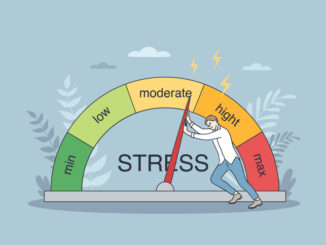
Do you do what you do best at work every day? David Carne, serving school business professional and executive coach, thinks you should be able to – and argues that a focus on ‘fixing’ weaknesses is counter-productive
Conventional wisdom and performance management approaches suggest that, in order to optimise our own and others’ performance, we should improve weaknesses. However, research suggests that gains in performance made by focusing on improving specific weaknesses may be offset by reductions in overall performance and engagement due to the demotivating and disempowering impact of focusing on weaknesses.
This poses a challenge in relation to setting performance targets, which often look to identify things peopledo badly so that these can be improved. What’s the alternative? Psychologists suggest focusing on strengths instead.
So how do we adopt a strengths-based approach to team leadership and management?
What are strengths?
‘Strengths’, in this context, are psychological capacities for exceptional performance. Unpacking that a little, a strength is something that feels natural and authentic to do, which energises us, and which individuals have the potential to be really good at. The key word here is ‘potential’, because many people either do not know what their strengths are, or are not using them to their full potential.
Why focus on strengths?
In the early 1990s Gallup identified 12 factors that employees of high-performing workplaces said their managers ensured were in place. These were developed these into the Q12 Questionnaire, which has been administered by Gallup to over 3 million employees, in multiple industries, over the last 30 years.
A core question in the questionnaire is, ‘At work, do you have the opportunity to do what you do best every day?’
It turns out that when supervisors focus on their staff’s strengths they are six times more likely to be engaged in their work and 14% more productive; they take less time off sick and are up to 72% less likely to leave.Focusing on strengths leads to lower levels of stress and depression, increased energy levels, higher levels of creativity and a greater sense of employees finding meaning in their work.
As I tell my staff, when we focus on our strengths, other positive outcomes follow; but how do we focus onour strengths? I would suggest four ways to get started on building a strengths-based, high-performance,culture.
1. Help people identify their own and others’ strengths.
Get people to ask each other about their strengths and listen to the feedback. Use one of the many psychometric tools and questionnaires out there (we use Strengths Profile, but there are others). Givethem a language to describe the things they are good at. Train them to strengths-spot. The results of just doing that, in my experience, are often a catalyst for a boost in energy.
2. Have strengths-based conversations.
Once your team are comfortable identifying their strengths, start to talk to them about how those strengths help them do the work they do. Ask them how they could use their strengths to do new tasks, or do existing ones differently. Talk about where their strengths align with opportunities to develop, or take on new responsibilities.
3. Shape teams around strengths.
Bring together people with complementary strengths and create teams where people genuinely get to frequently do what they do best every day; when the opportunity arises, recruit people who have strengthsthat fill the gaps. Give your team a degree of autonomy to ‘job craft’ – where they get to build aspects of their work around what they do well.
4. Use strengths-based targets in performance management.
When it comes to annual reviews, think about the organisation’s goals and align each individual’s strengthsto those goals through targets. You will be amazed how some people go away and engage with this, delivering better results that you expected.
5. Identify and build on the strengths of your organisation.
Don’t stop with individuals; ask your team to identify the strengths of the team, or the strengths of the whole oganisation. Use what you learn to set goals for the future.
Taking the time to invest in people, getting to know them and finding out what they do well, can transformtheir sense of being valued. This plays to question five on the Q12 questionnaire, ‘Does your supervisor, or someone at work, seem to care about you as a person?’
Can we just focus on what we do best and ignore our weaknesses?
Of course, we cannot be naïve; under-performance still needs addressing, and there will always be tasks whichdon’t energise us. The ideal is to minimise our weaknesses to the point where they no longer get in our way,becoming ‘good enough’; maybe that aspect of the role can be reallocated, or that team member can work withsomeone else who has a complimentary strength they lack, or maybe they need coaching and support to achieve sufficient competence that the weakness longer holds them back.
They key is balance. I would suggest that, currently, the scales are firmly tipped in favour of fixing what we do badly, and there is a huge opportunity in shifting it towards a greater focus on what we do brilliantly.



Be the first to comment